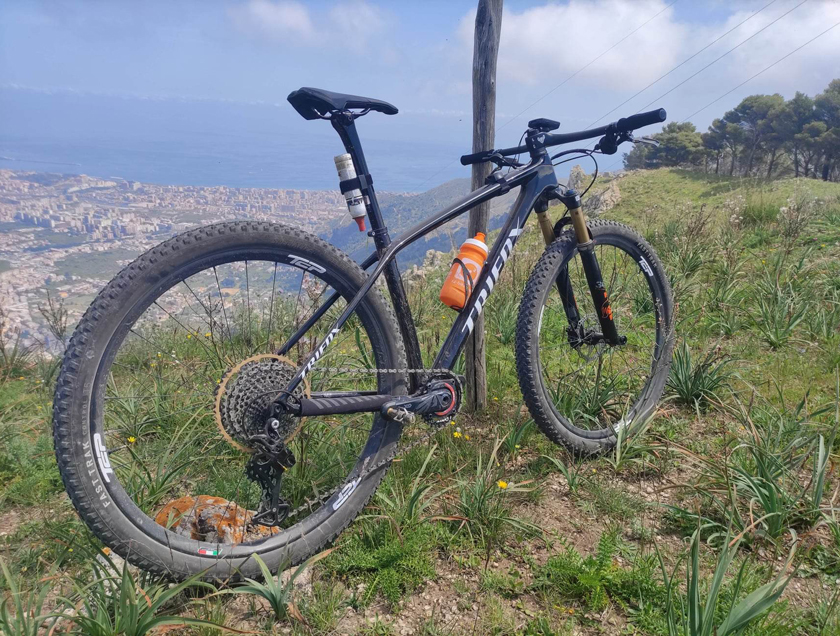
Whether you’re a competitive cyclist, a recreational rider, or someone aiming to improve fitness, setting goals is crucial for progress. Goals give purpose and direction to your cycling journey, helping you stay motivated, track progress, and push your limits. But it’s not enough to simply say, “I want to get better at cycling.” Achieving goals requires strategy, dedication, and a clear plan. So, what are the best strategies for setting and achieving your cycling goals? 1. Define Clear, Measurable Goals The first step in any goal-setting process is to define clear, measurable objectives. Without clear goals, it's easy to lose sight of what you want to achieve. Instead of saying, “I want to ride more,” set specific targets, such as: -Ride a certain number of miles per week: “I will ride 100 miles per week.” -Achieve a specific speed or time: “I will improve my 10-mile time by 10%.” -Participate in a cycling event: “I will complete a 100-mile race by the end of the season.” Measurable goals make it easier to track your progress and stay motivated, as you can see the tangible improvements over time. 2. Break Goals into Smaller Milestones Once you have your big goal, break it down into smaller, more manageable milestones. These milestones act as checkpoints on your journey and give you a sense of achievement as you progress. For instance, if your ultimate goal is to complete a century ride (100 miles), break it down into milestones like: -Week 1: Ride 30 miles -Week 3: Ride 50 miles -Week 6: Ride 75 miles -Week 9: Complete 100 miles Smaller, incremental goals help you stay focused without becoming overwhelmed by the larger target. They also provide an opportunity for frequent celebrations and reinforce the habit of progress. 3. Focus on Consistency Over Intensity Consistency is key to progress in cycling. While it’s tempting to push yourself hard during a single workout, long-term success comes from steady, consistent effort. Try to establish a regular cycling schedule that fits your lifestyle and gradually increases in intensity over time. For example, if you’re aiming to build endurance, focus on steadily increasing your weekly mileage. If you’re working on speed, try to gradually improve your time on a set route or track. Remember, consistency doesn’t mean pushing yourself to exhaustion every ride. It means making cycling a regular habit, which will pay off over time. 4. Track Your Progress with Technology One of the advantages of cycling in the modern age is the plethora of technology available to help track your progress. Bike computers, GPS devices, fitness apps, and heart rate monitors can provide valuable data on your performance. Track metrics like speed, distance, heart rate, cadence, and elevation gain to see where you are improving and where you need to focus. For example, tools like Strava and Garmin can track your rides and let you compare performance over time. This data-driven approach helps you stay focused and adjust your training plan as necessary. 5. Create a Training Plan A structured training plan tailored to your cycling goals is essential for making measurable progress. Whether you’re training for a race or simply aiming to improve your fitness, a well-balanced training plan should include: -Endurance rides: Longer, steady rides to build stamina. -Interval training: Short, intense bursts of effort followed by rest periods to improve speed and power. -Strength training: Exercises off the bike (like leg and core workouts) to improve cycling performance and prevent injury. -Rest and recovery: Incorporating rest days is crucial to allow muscles to repair and grow stronger. A structured training plan ensures that you’re working on different aspects of your cycling abilities and prevents burnout. 6. Stay Flexible and Adapt Your Plan Life can sometimes interfere with your best-laid plans, whether it’s weather conditions, illness, or other commitments. It’s important to stay flexible and adapt your goals and training plans when necessary. Missing a few rides or having to adjust your target date isn’t a failure—it’s an opportunity to learn and adjust. For example, if weather conditions cause you to miss an outdoor ride, consider doing an indoor trainer session or an alternate form of exercise to maintain fitness. 7. Celebrate Milestones and Stay Positive Cycling goals can take time to achieve, but celebrating small victories along the way can help you stay motivated. Whether it’s completing a challenging ride, hitting a personal best, or simply sticking to your training schedule, recognize your progress. Positive reinforcement is key to maintaining enthusiasm, especially during tough times. Additionally, maintain a positive mindset and focus on your progress rather than setbacks. Cycling can be challenging, but with persistence and the right strategies, you can overcome obstacles and reach your goals. Conclusion Setting and achieving cycling goals requires more than just motivation—it requires a clear strategy. By setting specific, measurable goals, breaking them into manageable milestones, staying consistent, and tracking progress, you’ll be well on your way to becoming a better cyclist. Remember to stay flexible, celebrate your achievements, and keep a positive mindset. With patience and persistence, you’ll see significant progress and achieve your cycling goals. For more tips and cycling gear recommendations to support your journey, visit Trifox Bike. Happy riding!
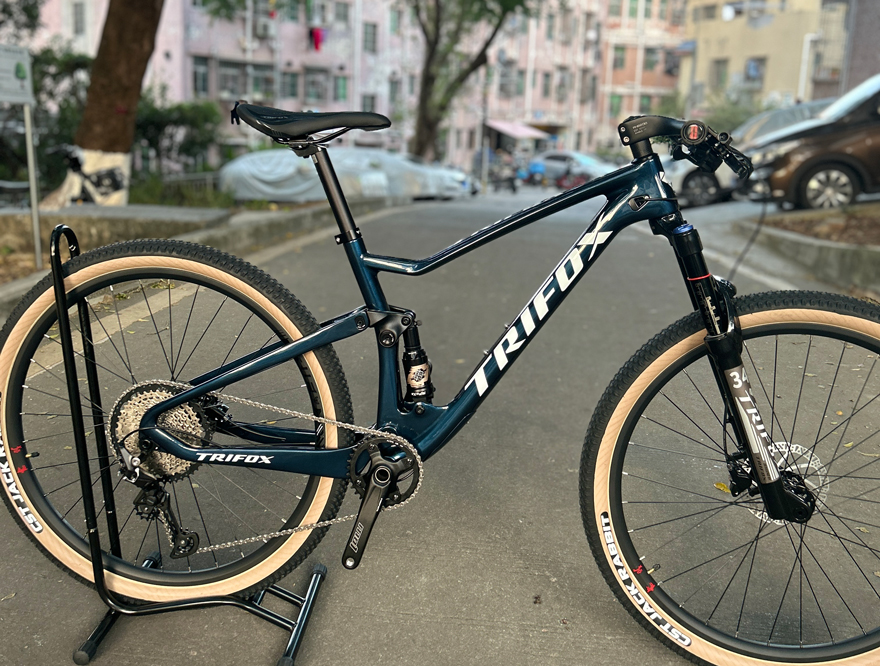
Cross country mountain biking embodies the spirit of adventure, offering riders the thrill of navigating rugged terrains with speed and precision. For those who crave the adrenaline rush that comes with conquering steep climbs and technical descents, cross country mountain bikes are the ultimate companion. These bikes are meticulously designed to deliver a perfect blend of performance, comfort, and control, making them ideal for adventurous riders. Among the notable examples in this category is the TRIFOXBIKE PIONEER, a cross country mountain bike that epitomizes the pinnacle of modern bike engineering. A key feature that sets the TRIFOXBIKE PIONEER apart is its carbon fiber frame. Carbon fiber is heralded for its superior strength-to-weight ratio, providing a lightweight yet robust structure that enhances a bike's agility and speed. For cross country enthusiasts, this translates to less fatigue during prolonged rides and an ability to swiftly maneuver through tight trails and demanding terrains. The TRIFOXBIKE PIONEER's carbon frame not only boosts speed but also absorbs vibrations and shocks, offering a smoother and more comfortable ride. Equipped with dual suspension, the TRIFOXBIKE PIONEER ensures that riders maintain stability and control even on the roughest paths. The suspension system, featuring 120mm of travel, is adept at absorbing shocks from obstacles like rocks and roots, granting riders a seamless and confidence-inspiring experience. This is particularly beneficial for those who relish tackling unpredictable and challenging trails. The dual suspension also improves traction, allowing riders to maintain their momentum and speed without being derailed by uneven ground. Adding to the bike's remarkable specs is the SHIMANO M6100 groupset, known for its precision and reliability. This advanced componentry offers smooth and rapid gear shifting, critical for maintaining control and efficiency during intense rides. Whether you're climbing steep hills or descending fast slopes, the SHIMANO M6100 ensures that your gearing is always optimized for the task at hand, enhancing both performance and rider safety. Furthermore, the TRIFOXBIKE PIONEER is designed with adaptability in mind. Its geometry can be subtly adjusted to suit various riding styles and terrains, ensuring that each rider can tailor their bike to their specific needs. This adaptability is crucial for adventurous riders who may encounter a wide range of environmental conditions and trail types on their journeys. The lightweight nature of the bike, courtesy of its carbon fiber construction, also plays a significant role in its appeal. By minimizing weight, the TRIFOXBIKE PIONEER allows for quicker accelerations and more nimble handling, which are essential for cross country racing and exploration. This reduction in weight does not come at the expense of durability, as the bike is crafted to withstand the challenges of rugged trails. In conclusion, cross country mountain bikes like the TRIFOXBIKE PIONEER are ideal for adventurous riders due to their innovative design and advanced features. The combination of a carbon fiber frame, dual suspension, and a state-of-the-art groupset like the SHIMANO M6100, all work harmoniously to provide an unparalleled biking experience. These elements ensure that riders can tackle diverse terrains with ease, maintain high levels of comfort and control, and push their limits on every ride. For those who seek adventure in the great outdoors, a cross country mountain bike is not just a mode of transport, but a gateway to new experiences and thrills.
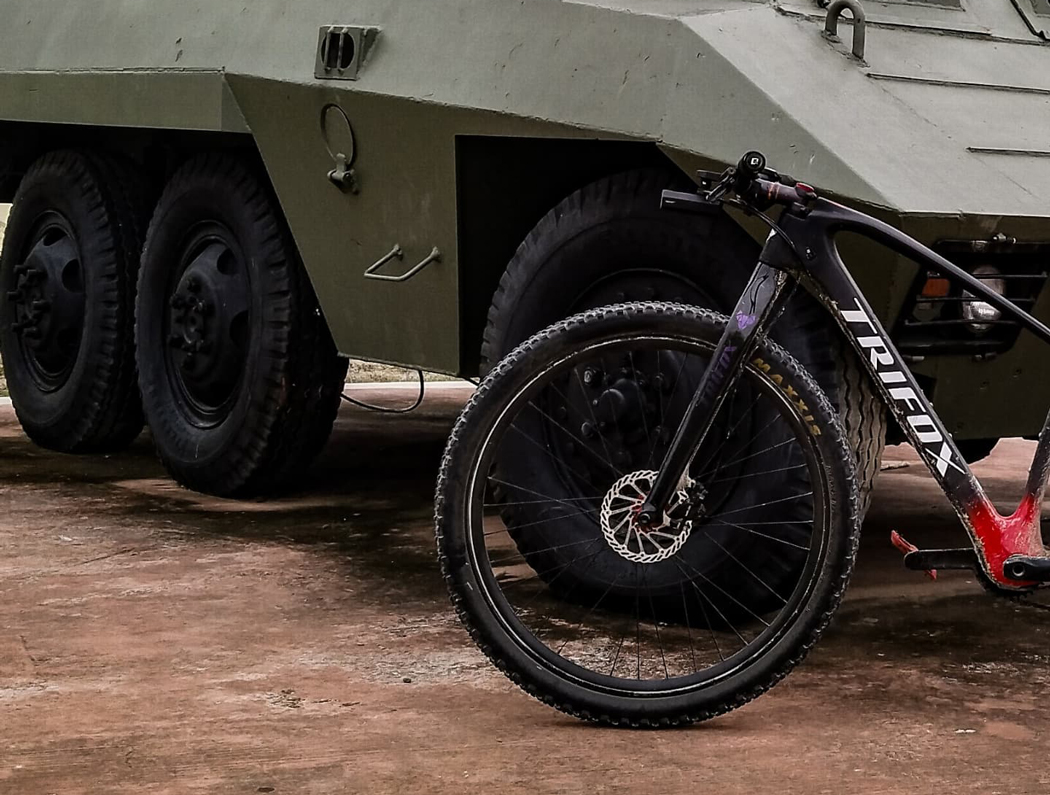
When it comes to mountain biking, every component of your bike plays a crucial role in shaping your riding experience. Among these, the fork is indispensable, directly affecting control, weight, and overall bike performance. The 29er rigid fork has become a popular choice for many riders seeking efficiency and simplicity. Advantages of a 29er Rigid Fork 1. Weight Reduction: One of the most significant benefits of a rigid fork is its lightweight nature. Unlike suspension forks, rigid forks eliminate the extra weight added by suspension components, which can be particularly advantageous for riders looking to enhance their biking speed and efficiency. This weight reduction translates into easier handling and quicker climbs, allowing you to conserve energy over long distances. 2. Increased Control and Precision: With no suspension to compress or rebound, a rigid fork offers direct and immediate feedback from the terrain. This characteristic provides riders with exceptional control and precision, making technical maneuvers more predictable and stable. It's especially beneficial for riders who prefer a more direct connection to the trail. 3. Durability and Low Maintenance: Rigid forks are known for their durability and simplicity. Without moving parts that require regular servicing, such as seals and bushings found in suspension forks, maintenance is minimal. This reliability makes rigid forks perfect for bikepacking and long-distance rides where maintenance opportunities might be limited. Why Choose a 29er? The 29-inch wheel size, or 29er, offers several benefits, such as better momentum retention, improved rollover ability on obstacles, and enhanced traction. When combined with a rigid fork, a 29er setup can offer a smooth and efficient ride on a variety of terrains. The larger wheel size helps maintain speed over rough terrains and provides a more stable ride, making it ideal for endurance cycling and cross-country trails. Features of Trifox Rigid Forks Trifox Bike offers an impressive range of carbon rigid forks that are designed to meet the diverse needs of mountain bikers: - Carbon Construction: Trifox’s rigid forks, like the Carbon MTB Fork QMK100, are constructed from high-quality carbon fiber, which ensures they are not only lightweight but also incredibly strong and durable. The carbon material also contributes to vibration dampening, offering a more comfortable ride compared to metal forks. - Competitive Pricing and Offers: Trifox provides excellent value for their products, often offering significant discounts, such as the 41% off on the QMK100 model. This affordability makes it easier for riders to access high-quality components without breaking the bank. Tips for Choosing the Right Rigid Fork 1. Compatibility: Ensure the fork you choose is compatible with your bike frame and wheel size. A 29er fork should match a 29-inch wheel setup. 2. Material Quality: Opt for forks made from high-grade materials like carbon fiber for the best combination of weight savings and durability. 3. Terrain Suitability: Consider the type of terrain you frequently ride on. A rigid fork is ideal for smoother trails and cross-country rides. 4. Budget: Set a budget and look for options within that range that offer the best quality and features. Trifox’s offerings provide great value for money. Conclusion Opting for a 29er rigid fork can redefine your mountain biking experience by providing unmatched control, reduced weight, and minimal maintenance. Trifox Bike emerges as a leading choice with its high-quality carbon constructions and customer-friendly services. Whether you're an avid cross-country rider or someone seeking a reliable fork for everyday trails, a 29er rigid fork from Trifox can be an excellent addition to your mountain bike, enhancing both performance and enjoyment on every ride.
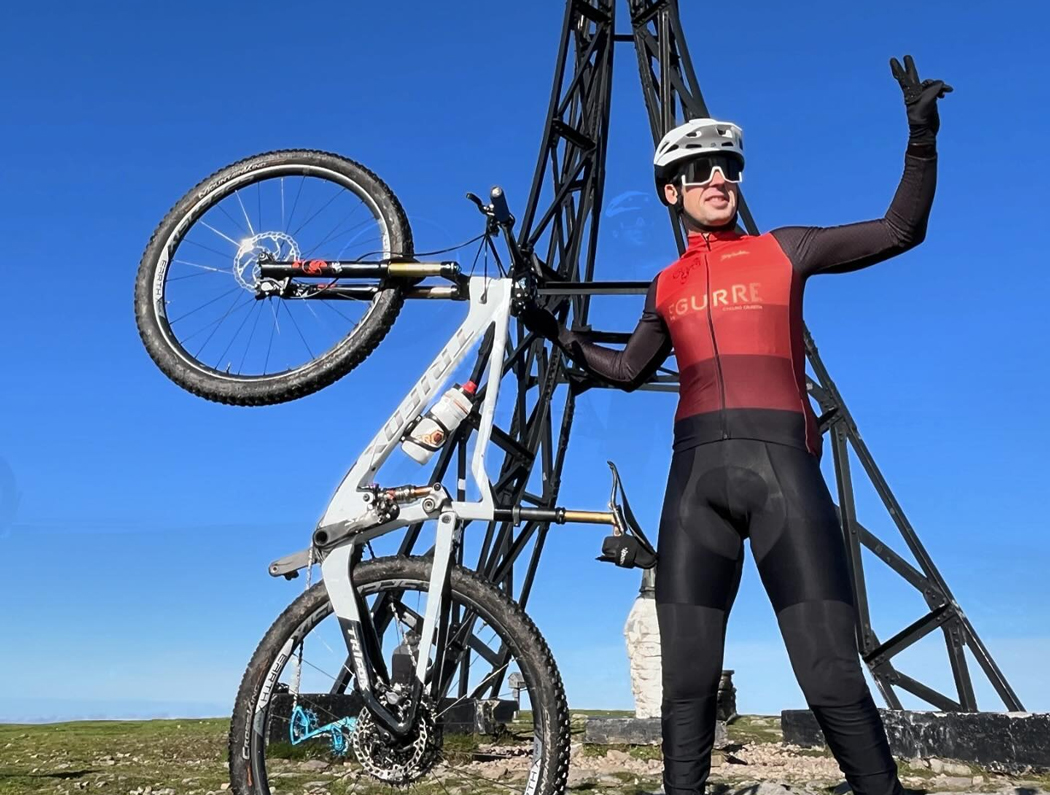
Choosing the right full suspension bike can transform your off-road biking experience, offering enhanced comfort, control, and performance. Full suspension bikes are designed to handle rough terrains by absorbing shocks from both the front and rear, making them ideal for trail and mountain biking. Here’s a comprehensive guide to help you choose the perfect full suspension bike, using insights from Trifox Bike's MFM100 full suspension carbon MTB frame. Understanding the Benefits of Full Suspension Bikes Full suspension bikes provide the advantage of dual shock absorption, which significantly reduces rider fatigue and enhances traction on uneven terrains. This dual suspension system allows for better handling and control, especially on descents and technical trails. The added comfort and control make full suspension bikes a popular choice for both competitive riders and casual adventurers. Key Features of the MFM100 Frame The Trifox MFM100 frame exemplifies what to look for in a high-performance full suspension bike: 1. Material and Weight: Made from T800 carbon fiber, the MFM100 frame is ultra-lightweight while maintaining strength and durability. Weighing just over 2kg, it provides a great balance for speed and endurance. 2. Boost Design: With a 148 x 12mm spacing, it enhances the rear wheel's strength and stiffness, accommodating up to 2.35" tires for better traction and stability. 3. Geometry and Suspension: The frame features a 68.5° head tube angle and a customizable rear shock mount, allowing riders to fine-tune their setup for optimal performance and comfort. 4. Internal Cable Routing: This feature offers a sleek, uncluttered look while protecting cables from the elements, contributing to the bike's overall aesthetic and aerodynamics. Steps to Choose the Right Full Suspension Bike 1. Determine Your Riding Style: Consider the type of terrain you plan to tackle. Trail bikes are versatile and suitable for various conditions, while downhill bikes are optimized for steep descents. 2. Choose the Right Frame Material: Carbon fiber frames like the MFM100 are preferred for their lightweight and strong construction, which enhances handling and speed. 3. Consider Suspension Type and Travel: Look for bikes with adjustable suspension to tailor your ride based on the trail conditions. The MFM100 offers travel options of 100mm to 115mm, providing flexibility for different terrains. 4. Evaluate Bike Geometry: Geometry affects handling and comfort. A longer wheelbase and slack head angle offer stability on descents, while a steeper seat tube angle improves climbing efficiency. 5. Assess Component Quality: Pay attention to the quality of components, such as the drivetrain, brakes, and wheels. High-quality components like those offered by Trifox ensure reliability and performance. 6. Test Ride If Possible: If you have the opportunity, test ride different models to feel the differences in handling and comfort. This can provide invaluable insight into what fits your style and preferences. Tips for Making the Right Choice - Budget Considerations: Determine your budget beforehand and focus on finding the best quality within that range. Trifox offers competitive pricing on high-performance frames like the MFM100. - Future Upgrade Potential: Consider a bike that allows for easy component upgrades. This flexibility can help you improve performance as your skills advance. In conclusion, selecting the right full suspension bike involves understanding your needs, evaluating technical specifications, and making informed decisions based on your riding style and goals. The Trifox MFM100 frame is an excellent example of a high-quality option that caters to various biking needs, making it a strong contender for anyone looking to enhance their off-road adventures. By following these steps, you can find a bike that delivers both excitement and comfort on every ride.
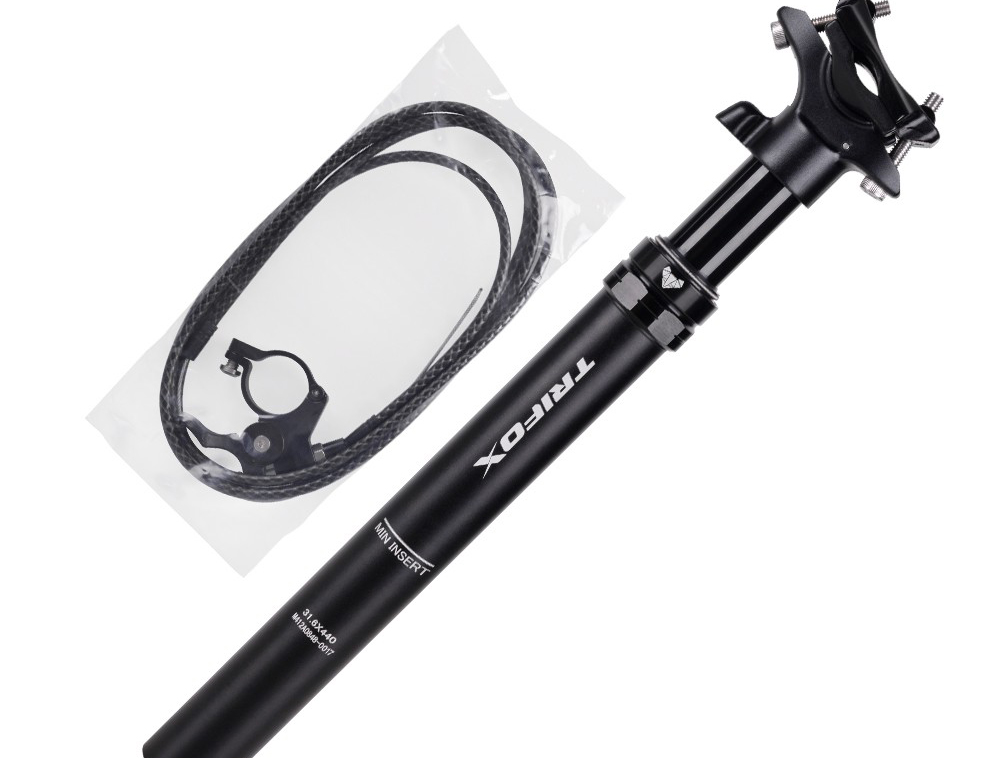
Cycling enthusiasts know that every component of a bike contributes to the overall riding experience. One often overlooked part is the seatpost, which can significantly impact comfort, performance, and bike handling. Among the various options available, the 27.2 carbon seatpost stands out for its unique benefits, making it a top choice for many cyclists. The Benefits of a 27.2 Carbon Seatpost 1. Weight Reduction: Carbon seatposts are renowned for their lightweight properties. The 27.2 mm diameter is particularly popular because it offers a perfect balance between strength and weight savings. A lighter seatpost reduces the overall bike weight, enhancing acceleration and climbing efficiency, especially beneficial for competitive cyclists. 2. Vibration Dampening: Carbon fiber is excellent at absorbing road vibrations, providing a smoother ride. This feature is crucial for long-distance cyclists who need to minimize fatigue over extended rides. The 27.2 carbon seatpost helps in reducing the vibrations felt through the saddle, improving comfort significantly. 3. Performance Improvement: By lowering the bike's weight and providing better vibration absorption, a carbon seatpost can dramatically improve ride quality and performance. Cyclists often experience better control and responsiveness, which is essential for high-speed descents and technical terrains. Why Trifox Bike? Trifox Bike has established itself as a leader in manufacturing high-quality carbon bike components, including seatposts. Here are some reasons why Trifox is an excellent choice for your next bike upgrade: - Quality and Durability: Trifox seatposts, such as the SLS21 Bike Seatpost, are crafted from premium carbon fiber, ensuring durability and longevity. These seatposts are tested for strength and resilience, providing peace of mind for cyclists tackling challenging routes. - Affordable Pricing: Trifox offers competitive pricing on their carbon seatposts, with discounts making them accessible to a broad range of cyclists. For instance, the AP316 Dropper Seatpost is available at a 58% discount, showcasing Trifox's commitment to affordability. - Customer Support and Convenience: With free shipping on orders over $50 and 24/7 live chat support, Trifox ensures a seamless shopping experience. Their secure payment options add an extra layer of trust for customers purchasing online. Tips for Choosing the Right Seatpost When selecting a 27.2 carbon seatpost, consider the following factors to ensure it meets your needs: - Compatibility: Ensure the seatpost diameter matches your bike's frame specifications. A 27.2 mm seatpost is standard, but always double-check your bike's requirements. - Riding Style: Consider your riding style and conditions. If you frequently ride on rough terrains, prioritize seatposts known for excellent vibration dampening. - Adjustment and Fit: Look for seatposts with easy adjustability for saddle height and angle, ensuring you can fine-tune your position for maximum comfort. - Material Quality: Opt for seatposts made from high-grade carbon fiber for the best balance between weight, strength, and durability. In conclusion, choosing a 27.2 carbon seatpost can significantly enhance your cycling experience by offering weight savings, improved comfort, and enhanced performance. Trifox Bike provides a range of high-quality and affordable options, making it an ideal choice for cyclists looking to upgrade their bike components. By focusing on compatibility, riding style, and material quality, you can select a seatpost that perfectly complements your cycling needs and preferences.
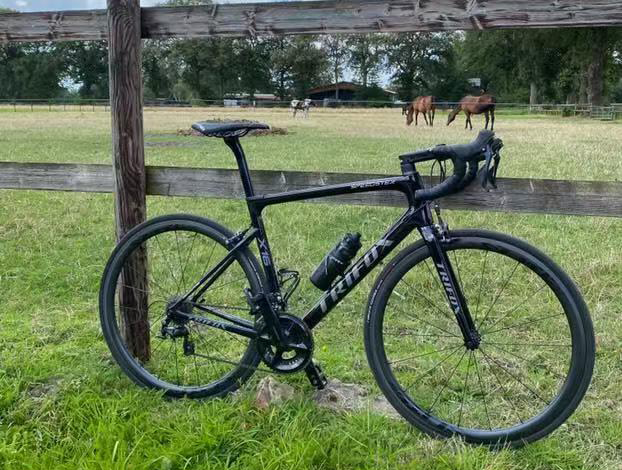
When it comes to cycling, carbon road bikes are the gold standard for those seeking a lightweight, durable, and performance-driven experience. However, finding an affordable option without compromising quality can be challenging. Fortunately, brands like Trifox Bike offer a compelling solution with their range of carbon road bike frames. The Appeal of Carbon Road Bikes Carbon fiber bikes are renowned for their strength-to-weight ratio, providing a smooth and efficient ride. The material's ability to absorb road vibrations enhances comfort, making long rides more enjoyable. Additionally, the flexibility in design allows manufacturers to optimize aerodynamics and stiffness where it's needed most, translating to better performance on the road. Trifox Bike: A Budget-Friendly Option Trifox Bike stands out as a budget-friendly manufacturer offering high-quality carbon road bike frames. Their frames are available in various styles, including AERO style, lightweight style, and both quick-release and thru-axle disc brake options. This variety ensures that you can find a frame that matches your riding style and preferences. Affordable Pricing and Discounts One of the most appealing aspects of Trifox Bike's offerings is the affordability. With discounts ranging up to 59%, you can purchase a carbon road bike frame for as low as $399. For instance, the Carbon Road Bike Frame X8QR is available at a significant markdown, making it an attractive option for cost-conscious buyers. Such competitive pricing ensures you get the best value for your investment. Features to Look For When purchasing a cheap carbon road bike, it's crucial to consider several factors to ensure quality and performance: 1. Frame Weight and Material: Opt for a lightweight frame that offers durability and strength without adding unnecessary weight. 2. Aerodynamics: Consider frames with aerodynamic designs, particularly if speed is a priority in your rides. 3. Brake Compatibility: Choose between quick-release V brake and thru-axle disc brake styles based on your braking preference and terrain. 4. Customer Reviews: Checking reviews can provide insights into the frame's performance and reliability. 5. Warranty and Support: Ensure the manufacturer offers a solid warranty and customer support, giving you peace of mind in your purchase. Why Choose Trifox Bike? Trifox Bike not only offers affordable carbon frames but also provides a comprehensive online shopping experience. They offer free shipping on orders over $50, ensuring that your purchase arrives quickly and without additional cost. Moreover, their 24/7 live chat support means you can get assistance whenever needed. With secure payment options, purchasing from Trifox is both safe and convenient. Conclusion Finding the best cheap carbon road bike involves balancing cost with features and quality. Trifox Bike's range of carbon road bike frames presents an excellent option for those seeking performance without breaking the bank. By focusing on essential features like weight, aerodynamics, and customer reviews, you can ensure you select a bike that offers both value for money and a superior riding experience. Whether you're upgrading your current bike or buying your first carbon frame, Trifox Bike provides an accessible entry point into the world of high-performance cycling.

Customizing a rigid fork for your bike can significantly enhance your riding experience, particularly when using high-quality carbon models. Rigid forks, such as those offered by Trifox Bike, provide a unique blend of lightweight performance and durability, making them an excellent choice for mountain biking enthusiasts. Benefits of Rigid Forks Rigid forks are known for their simple design and efficiency. Unlike suspension forks, they do not have moving parts that can wear out, leading to less maintenance and a lighter overall bike weight. This simplicity also translates into improved responsiveness and precision, which is ideal for riders tackling smooth trails or urban environments. Carbon rigid forks, like Trifox's QMK100 and TMK200, further enhance these benefits by offering exceptional strength-to-weight ratios. This means you can enjoy a sturdy ride while minimizing the load you carry, which is crucial for long-distance rides or climbing steep terrains. Customization Options 1. Weight Adjustments: Depending on your riding style, you might prioritize either weight or strength. Carbon rigid forks are inherently light, but you may want a specific weight distribution for your setup. Choosing a fork like the Trifox Carbon MTB Fork QMK100 allows you to enjoy a balanced ride with an optimized weight for climbing or sprinting. 2. Terrain Suitability: Your choice of rigid fork can be adapted to different terrains. For instance, the TMK200 model is designed to handle rugged trails with ease, providing stability and control. Customizing your fork to match your primary riding terrain can enhance your bike’s performance, whether you’re navigating city streets or mountain paths. 3. Riding Style: Consider your riding style when customizing your fork. If you’re a commuter, you might want a fork that offers quick handling and precision. Mountain bikers, on the other hand, might prioritize strength and durability to withstand challenging off-road conditions. Installation and Maintenance Customizing your rigid fork also involves proper installation and maintenance to ensure optimal performance. Here are some tips: - Installation: When installing a new rigid fork, ensure that it is compatible with your bike's frame and wheel size. Follow the manufacturer’s guidelines closely, and consider having a professional bike mechanic assist you if you’re unsure. - Maintenance: Keep your rigid fork clean and regularly check for any signs of damage or wear. Although rigid forks require less maintenance than suspension forks, inspecting them periodically ensures longevity and reliability. Choosing the Right Fork Selecting the right rigid fork involves balancing performance and comfort. Trifox’s range of carbon rigid forks offers various options to suit different preferences. The QMK100, for example, is an excellent all-rounder that offers a good blend of weight and durability, while the TMK200 might cater more to those seeking a rugged, trail-ready option. Conclusion Customizing a rigid fork for your bike is more than just a technical upgrade; it’s about enhancing your overall biking experience. By knowing how to adjust your fork for weight, terrain, and riding style, you can significantly improve your bike’s performance and your comfort on the ride. Whether you're choosing a Trifox QMK100 for its lightweight advantage or the TMK200 for its robust design, understanding the customization process and maintenance needs will help you make the most out of your biking adventures. Embrace the simplicity and precision of rigid forks and enjoy the ride!
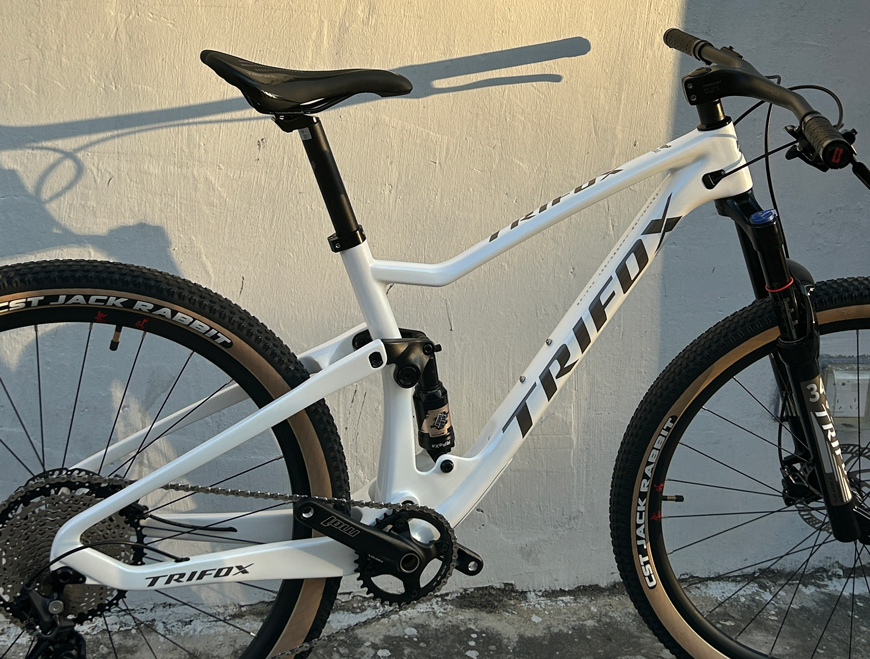
In the rapidly evolving world of mountain biking, the best MTB bikes of 2024 are pushing the boundaries of design and technology, offering riders unparalleled performance and experience on the trails. Emerging trends showcase bikes that are not only lighter and faster but also more durable and versatile, catering to a wide range of riding styles and terrains. Innovative Use of Carbon Materials One of the standout features of 2024’s best mountain bikes is the extensive use of carbon fiber. Known for its incredible strength-to-weight ratio, carbon fiber allows for the creation of frames that are both lightweight and robust. This material is a game-changer in the MTB world, providing riders with bikes that can handle rugged trails and steep climbs with ease. Trifox Bike’s carbon mountain bikes, such as the Pioneer and M2, exemplify this trend, offering frames that are not only aesthetically pleasing but also performance-optimized. Advanced Suspension Systems The latest mountain bikes boast highly sophisticated suspension systems that significantly enhance comfort and control. Full suspension bikes, like those offered by Trifox, help absorb shocks from rough terrain, allowing for smoother rides and better traction. This technology is crucial for riders tackling technical trails, as it maintains stability and maximizes power transfer, ensuring that every pedal stroke counts. Whether you’re a downhill enthusiast or a cross-country racer, the improved suspension in 2024 models makes navigating challenging paths a breeze. Cutting-Edge Technology and Components Modern MTB bikes are also incorporating advanced technology to optimize rider performance. From electronic shifting systems that provide precise gear changes to smart sensors that monitor bike metrics, these innovations offer an edge to tech-savvy cyclists. Trifox’s high-end models are equipped with such features, enabling riders to fine-tune their rides and push their limits safely and efficiently. Versatility and Customization The best mountain bikes of 2024 are designed to cater to a broad spectrum of riders and conditions. Whether you’re an adrenaline junkie seeking downhill thrills or a leisure rider exploring scenic trails, there’s a bike tailored for your needs. Trifox offers a range of customization options, allowing cyclists to choose components that match their riding style and preferences. This versatility ensures that every rider can find a bike that feels like a natural extension of themselves, enhancing their overall experience. Performance-Driven Design A focus on aerodynamic and ergonomic design is another hallmark of top MTB bikes this year. Streamlined frames and components reduce drag, while ergonomic adjustments improve rider comfort, particularly on long rides. The Pioneer model, for example, emphasizes both speed and stability, making it a preferred choice for competitive riders. Meanwhile, the M2 model offers a balance of power and agility, suitable for those who enjoy a mix of terrains. Eco-Friendly Manufacturing Sustainability has become a significant consideration in the manufacturing of 2024’s best mountain bikes. Brands like Trifox are adopting eco-friendly production practices, using recyclable materials and reducing waste. This commitment not only benefits the environment but also appeals to the growing number of environmentally conscious consumers. In conclusion, the best MTB bikes of 2024 stand out due to their innovative use of materials, advanced technology, and thoughtful design. By incorporating cutting-edge features and eco-friendly practices, these bikes offer an enhanced riding experience that meets the demands of modern cyclists. Whether you’re drawn to the sleek design of the Pioneer or the versatile performance of the M2, Trifox’s offerings provide excellent examples of what to expect in this exciting new era of mountain biking.

In the world of competitive cycling, the choice of bicycle can be as critical as the training regimen itself. Top riders often select bikes that enhance their performance through a combination of advanced technology, superior materials, and innovative designs. The Allure of Carbon Frames One of the most sought-after features in professional-grade bicycles is the carbon frame. Carbon fiber is favored for its remarkable combination of lightweight and strength, allowing riders to achieve higher speeds with less effort while maintaining durability. Trifox Bike, known for its high-quality carbon products, offers frames that are not only light but also robust, providing a solid foundation for competitive racers. Performance and Durability The demands of professional cycling require bikes that not only perform well but also withstand rigorous use. Trifox's carbon frames and components ensure that durability does not come at the cost of performance. Models like the Pioneer and the Ultra Light SF-QR 2.0 exemplify this balance, providing riders with the agility needed for swift maneuvers and the toughness required for endurance. Technological Advancements Top riders also gravitate towards bicycles that incorporate the latest technological advancements. Features such as aerodynamic designs, integrated components, and enhanced suspension systems can make a significant difference in a race. Trifox's commitment to innovation is evident in their bike designs, which often include cutting-edge technology that optimizes speed and efficiency. Benefits of High-Quality Materials The use of high-quality materials extends beyond just the frames. From carbon wheels to handlebars, every component can impact the overall performance of a bike. Trifox ensures that each part contributes to a cohesive, high-performing machine, allowing cyclists to focus on their ride without worrying about equipment failure or inefficiencies. Specific Models for Different Needs Professional cyclists often choose bikes tailored to their specific disciplines or racing conditions. Trifox offers a variety of models to cater to these diverse needs. The Pioneer, for example, is an excellent choice for those prioritizing stability and power transfer, making it ideal for road races. Meanwhile, the Ultra Light SF-QR 2.0, true to its name, is designed for those who need a feather-light ride that doesn't compromise on speed or control. Influence on Professional Choices Ultimately, the choice of bicycle among top riders comes down to how well the bike can enhance their natural abilities and complement their training. The precision engineering and thoughtful design of Trifox bikes offer these athletes the tools they need to excel. With features that maximize performance and provide a competitive edge, it's no wonder that such bicycles are the go-to choice for many professionals. In conclusion, the preferences of top riders reflect a blend of innovation, material excellence, and performance-focused design. As cycling technology continues to evolve, brands like Trifox are at the forefront, providing bicycles that meet the high standards of elite cyclists, ensuring every ride is not just a journey, but a testament to the power of modern bike engineering.

















